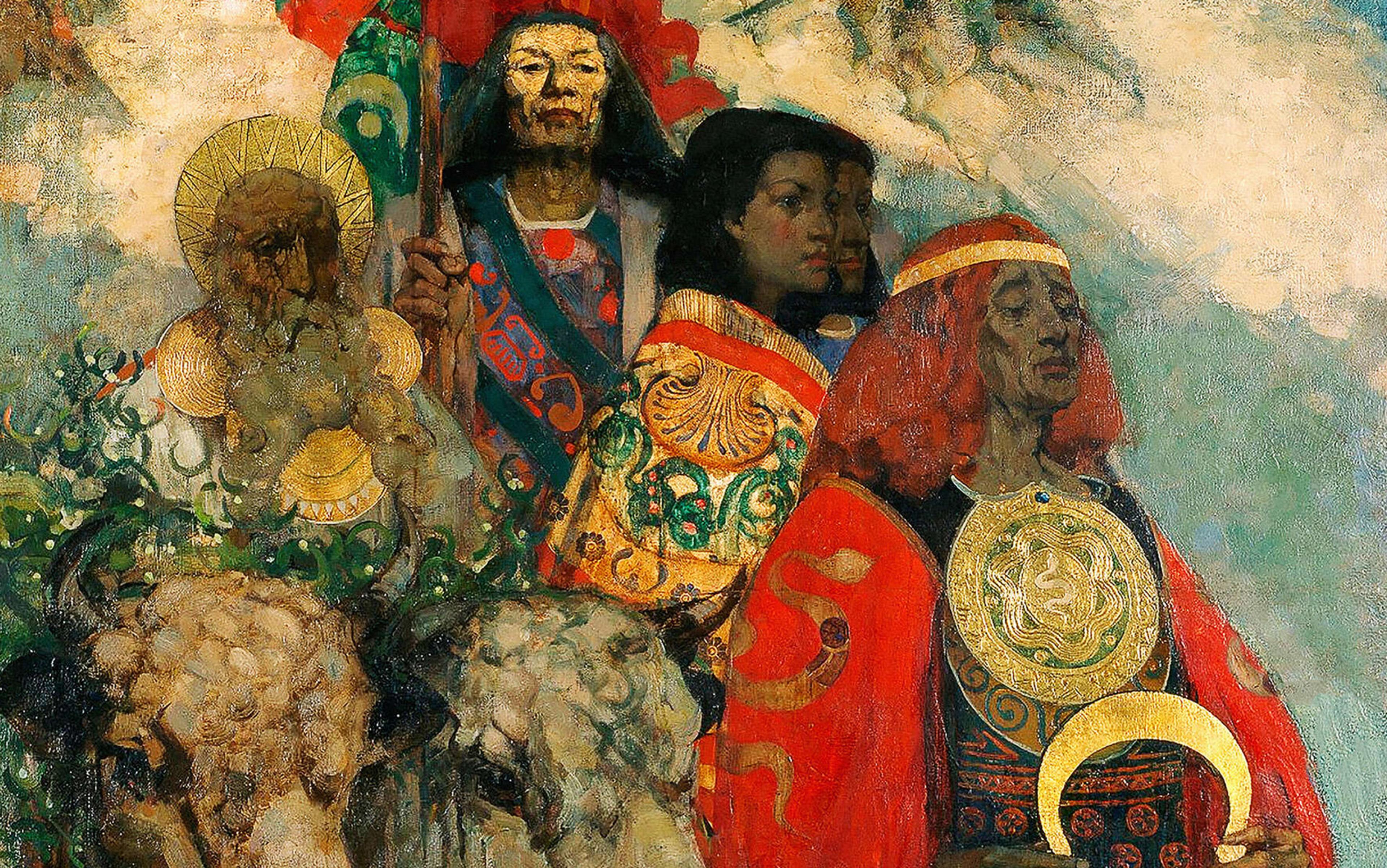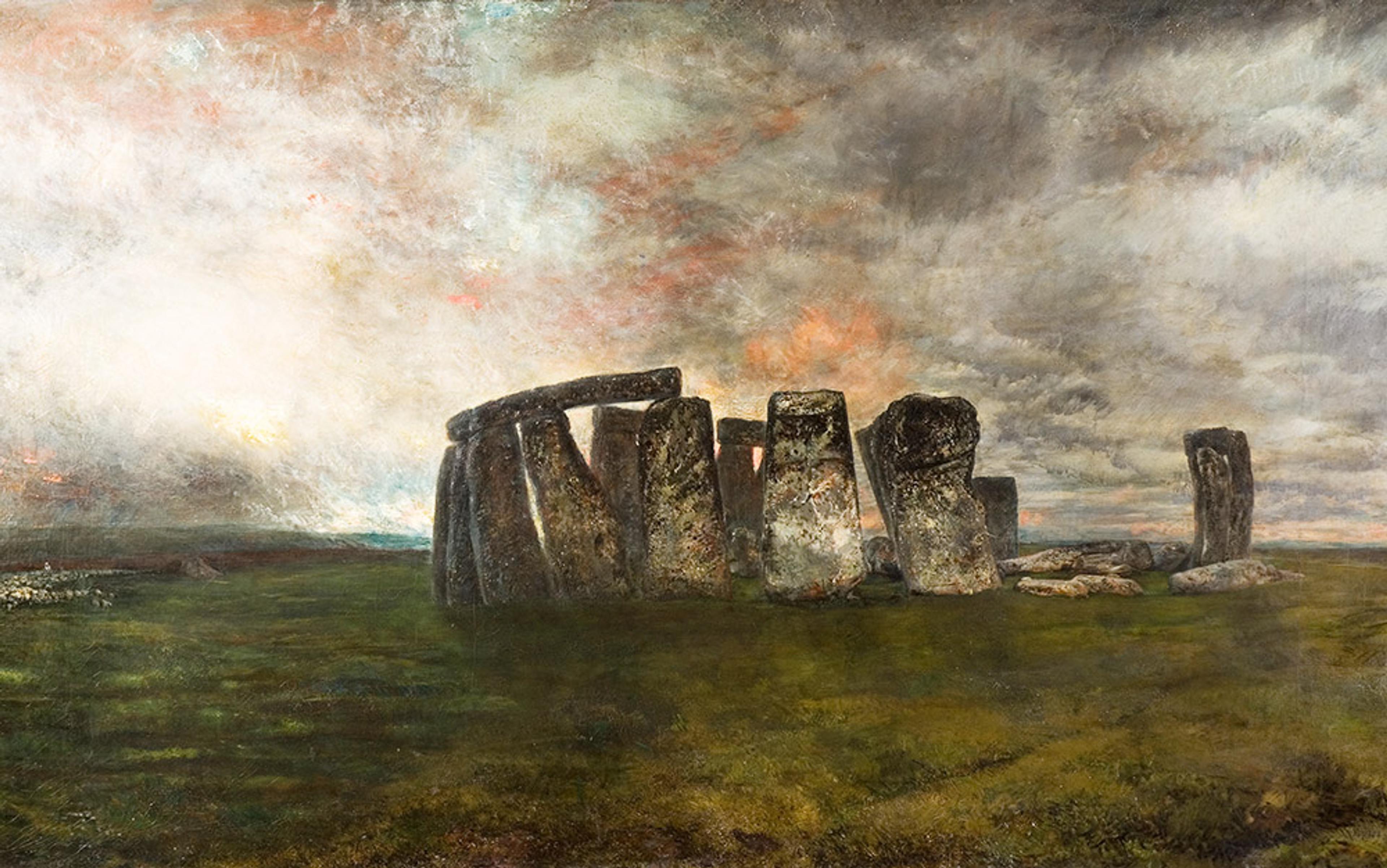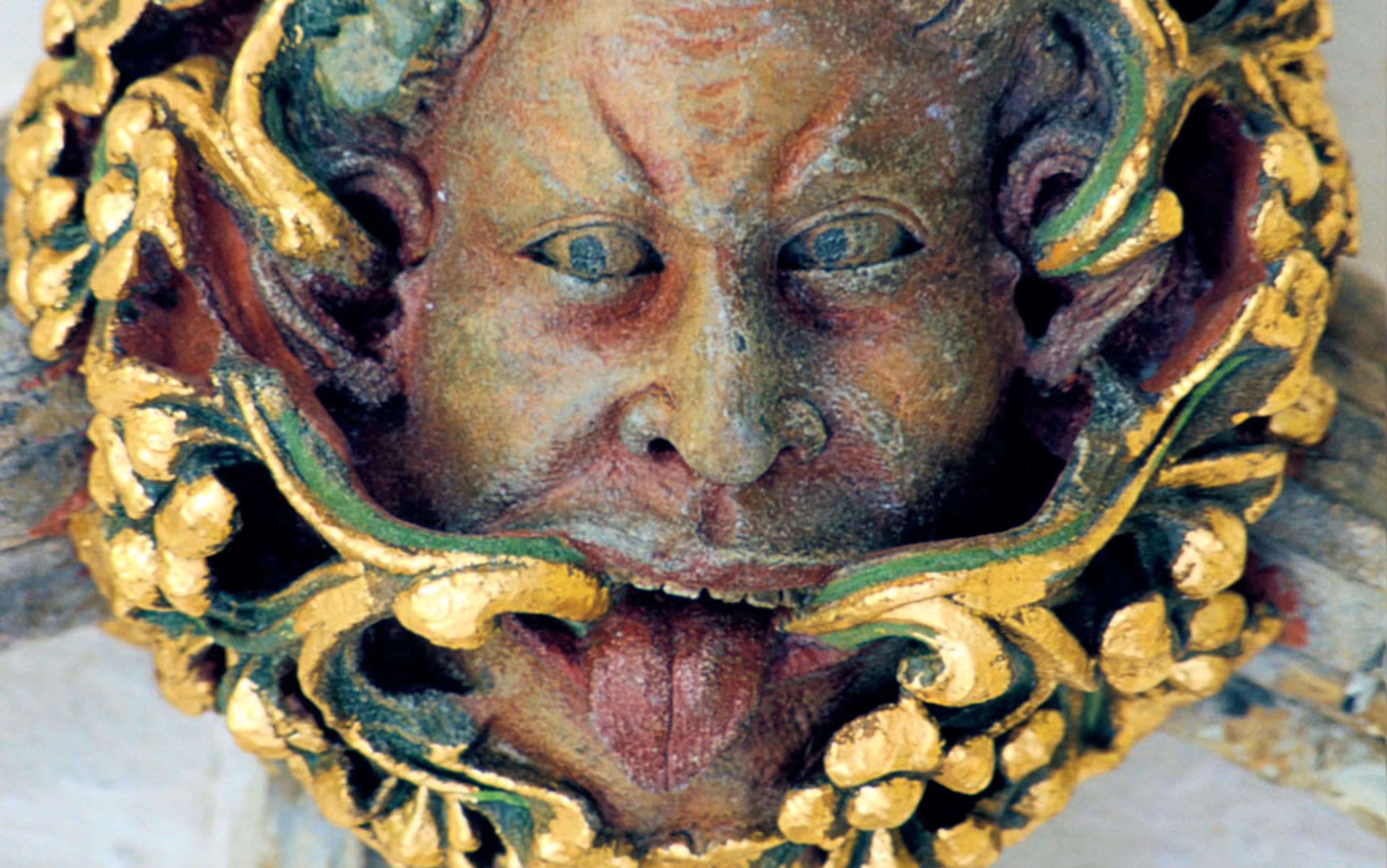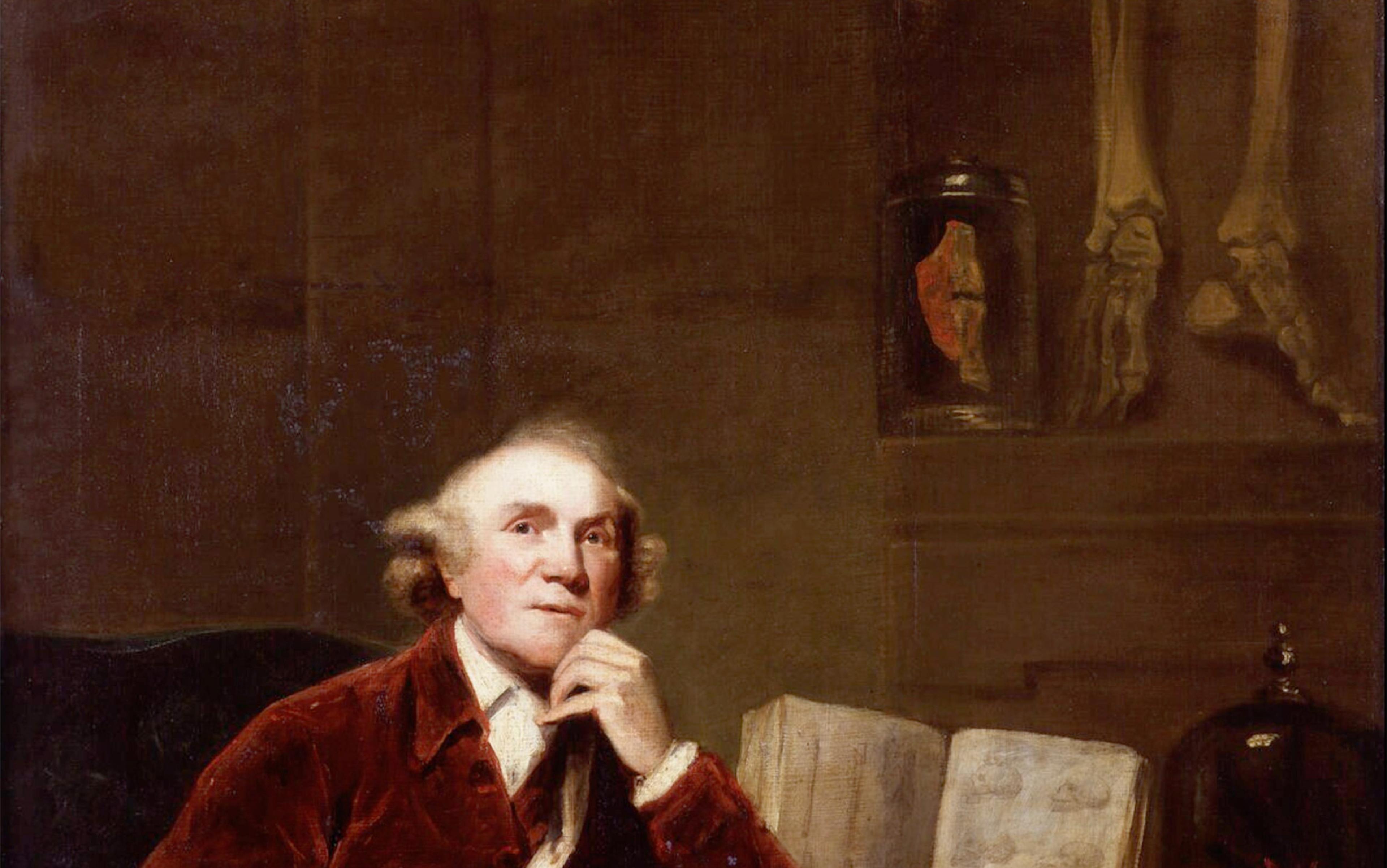Gaius Verius Sedatus was a respectable citizen of the community of Chartres in the early 2nd century CE. He was a member of his local town council (a sort of mini-senate), where he and his colleagues presided over its laws and management, under the aegis of Roman law. Gaul had been conquered by Julius Caesar two centuries earlier and was now administered by trusted locals such as Sedatus, overseen by distant Roman officials.
But Sedatus lived a double life. In the evening, he donned the mantle of a magician-priest and descended to his underground temple in the small cellar of his house. There he kept a group of four large incense-burners, placed symmetrically at the points of a square. He filled these vessels with aromatic, perhaps hallucinogenic herbs, and lit fires beneath them. When the drug-laden smoke was sufficiently dense for his needs, he and his followers began to summon the spirits by chanting their names and demanding that they provide him with guidance in the dark arts.
Who were these spirits, who had to be contacted so secretly in a small space, dimly lit with oil lamps and flickering candles? Fortunately, one of the incense-burners is complete enough to study closely. The vessel is inscribed, telling us who Sedatus was: a Roman citizen (because of his triple name) and the presiding ritualist who summoned the spirits. Beneath this statement is a long list of spirit names, almost all of which are unknown to archaeologists. But one stands out: ‘Dru’. If we are right in assuming this is an abbreviation of ‘Druid’ (and what else could it be?) then it is the only direct archaeological evidence for the existence of the Druids.
The Druids have long allured. A great many Greek and Roman writers mentioned them, with a mixture of awe, fear, disgust and respect. A thorn in the side of Rome because they exerted sufficient influence in ancient Britain and Gaul to threaten the expansion of the Roman Empire, the Druids were a shadowy class of priests, religious leaders, even freedom-fighters. They whipped up resistance and sedition that the Roman army found hard to fight. The Druids had no literate footprint of their own, and so their reputation continues to rely on Greek and Roman ‘spin’ that painted these elusive priests as bogeymen who bathed in the blood of human sacrificial victims, calling down terrifying spirits from the dark otherworld to shrivel their enemies. But who were they really? And how do we know?
More than 30 Greek and Roman writers from around 200 BCE to the 4th century CE were fascinated by this enigmatic group of ritualists. There has been a lot of controversy concerning the veracity of these ancient authors and their plagiarism or recycling of ‘facts’ about the Druids. However, I do have faith in one: Julius Caesar. He was in Gaul for nearly 10 years in the 50s BCE, leading the war of Roman conquest and so he knew the region personally rather than relying on secondhand information. And, because he was writing his chronicle for scrutiny by the Senate in Rome, it is doubtful whether he would have got away with fanciful imaginings because they could have been contradicted by his fellow officers.

The body of Lindow Man, aged mid-20s at time of death (c2 BCE-119 CE), found in Lindow Moss bog in Cheshire, northwest England. All images courtesy the British Museum

Lindow Man was the victim of a violent assault, sustaining many injuries before being placed face down in the bog

The Lindow Moss bog site in 1984
Caesar seems to have had quite intimate knowledge of Druidism, gained – at least in part – from his close friendship with a Druid named Diviciacus, who was also the ruler of a prominent Gallic tribe in eastern Gaul, the Aedui, an ally of Rome. We know of Diviciacus from another contemporary source, a comment by the orator Cicero who had met Diviciacus in Rome, and spoke warmly of the Gallic Druid as particularly skilled in the art of divination. So, while many ancient authors painted negative pictures of the Druids, condemning them as blood-soaked savages lurking in sinister forests, Caesar respected them for their erudition as natural scientists, teachers, healers and their specialism in liaising with the denizens of the otherworld. It is this last skill that appears to have left intriguing archaeological traces, including the rite of human sacrifice.
The sophistication of the murder suggests it was to keep the victim hovering between life and death for some time
In August 1984, industrial peat-cutting operations at Lindow Moss in Cheshire, in northwest England, revealed a horrific object: part of a human body. The police were called in to investigate a possible murder, and the body parts were soon identified as belonging to a young man. However, this man hadn’t died recently but about 2,000 years ago, at the time when Britain was in the process of becoming a Roman province. Lindow Man, as he is known, was the victim of a viciously violent and repeated assault that ended in his death and interment in a boggy pool sometime in the mid-1st century CE. His immersion in the swamp preserved not only his skeleton but his skin, hair and internal organs – a wonderful resource for archaeologists. He was fit, in his mid-20s, and we think he was a person of high status for his fingernails were in mint condition and his facial hair was neatly trimmed using a razor (an expensive piece of grooming equipment).
The reason for this man’s significance in the context of the Druids lies in the contents of his gut. There is a description of ancient Druidic rituals in Gaul by the Roman author Pliny the Elder (writing in the mid-late 1st century CE) in his massive Natural History, a multi-volume work describing natural curiosities throughout the known world. On the sixth day after the new moon, the Druids would gather beneath a sacred oak. One of them would climb the tree to cut down mistletoe from its branches, using a gilded sickle. According to Pliny’s testimony, the Druids regarded mistletoe as having the spiritual power both to heal and to promote fertility in crops and livestock. In the final hours before his brutal death, Lindow Man had consumed a special meal – a kind of ‘last supper’ – that contained a peculiar mixture of seeds, wild plants, cereal grains and mistletoe pollen in sufficient quantities for it to have been deliberately included in the griddled loaf that the luckless victim had consumed just before his brutal death.
The complex manner of his killing strongly suggests human sacrifice. He was stunned by a violent blow to the head, garrotted, and his throat cut. Then, while still breathing (there was bog water found in his lungs), he was thrust facedown into the marsh: a highly orchestrated ritual killing. And the presence of the mistletoe might, just might, tie his death to Druidic sacrificial action. The sophistication of the murder suggests that it was conducted with care and with the intention to keep the victim hovering between life and death for some time. (Bogs themselves are liminal and contradictory places, neither fully dry nor wet.) And, even after his death, the body of Lindow Man was suspended between states of being, since its preservation did not allow his remains to decay and thus, perhaps, denied his spirit to join the ancestors.
It is possible that the geographical situation of Lindow Man’s murder and interment has historical significance. There had been a Roman military presence in Britannia for at least 10 to 15 years before his death. This was at a time when the Roman army was pressing northwest from its primary bases in the southeast and, under the Roman general Suetonius Paulinus, a large force marched diagonally across Britain in order to destroy the Druids’ main power base, which, Tacitus tells us, was on the island of Anglesey in Wales. It is possible that the execution of Lindow Man might have been an aversion sacrifice, designed to protect the island with its Druidic sanctuary. If so, it didn’t work: the Roman army burned it down.
Tacitus wrote with revulsion of the dark groves on Anglesey, haunted by Druids and containing crude and sinister altars soaked with the blood of human sacrificial victims. We have no unequivocal archaeological evidence for such atrocities on the sacred island, but there is one site, Llyn Cerrig Bach, a small boggy pool, that cries out for recognition as an important late Iron Age shrine. Here, in the early 1940s, excavations were carried out to prepare a wartime landing strip for Royal Air Force station Valley. During this process, large numbers of objects were found, including iron slave-gang chains, military hardware, a pair of bronze cauldrons, beautifully decorated bronze implements and, significantly, the bindings from sceptres. All appear to have been deliberately cast into the bog. The bones of animals were also found here, plus a few human remains. Could this site have been the one described by Tacitus? Llyn Cerrig was certainly a holy place in which precious gifts were planted, not for safekeeping but for the propitiation of the gods. It is tempting to imagine the Druids at work here.
The reason why so many classical writers gave the Druids such a bad press was their reputation as perpetrators of human sacrifice. Caesar alludes to it in a pragmatic manner. According to him, the gods found it acceptable to use human sacrificial victims who had committed crimes – but, should the supply run out, the innocent would have to make up the numbers. Other Roman authors, such as Tacitus and Lucan, were clearly horrified by such ‘barbaric’ behaviour. But there is a sense in which this judgmental attitude might be accused of double standards, for the abolition of human sacrifice among the Romans themselves occurred only in the 1st century BCE. Such Roman hypocrisy is a good example of ‘conqueror prejudice’: the deliberate exaggeration of barbarism in order to paint the Druids and their people as nothing better than savages who deserved to be expunged.
The medical kit had been carefully placed upon a game board with glass counters, suggesting two players
There is substantial archaeological evidence for the practice of ritual murder in Iron Age and Roman-period Britain and Gaul, though whether or not by Druids is debatable. Lindow Man is the exception that proves the rule inasmuch as his body was so well preserved that it has been possible to track the details of his protracted torture and killing. But skeletal evidence also yields up its secrets of how people died in cult-driven circumstances. There is a cluster of Iron Age ‘war sanctuaries’ in central France with graphic examples of human sacrificial killings, the victims probably being prisoners-of-war. Two stand out: Gournay-sur-Aronde (Oise) and Ribemont-sur-Ancre (Somme). Decapitated human heads were prominently displayed at the entrance to Gournay and the bones of people and horses were constructed into large ossuary tables at Ribemont. Other sanctuaries, near the mouth of the river Rhône in southern France, such as Roquepertuse and Glanum, were likewise decorated with the trophy heads of slain enemies. The archaeological evidence demonstrates that Iron Age communities repeatedly killed people as part of ritual activity, but that this practice was rare. Two points arise from this. On the one hand, human sacrifice was probably undertaken only at times of great stress, when communities were under threat; on the other, the material evidence indicates that such rituals were undertaken in an organised manner, almost certainly conducted by priests. Whether they were Druids or not remains an open question, but it is sorely tempting to lay it at their door.
Given that classical writers stress that one of the prime functions of the Druids was to predict the future by consulting the spirits, there is a significant body of archaeological evidence that suggests organised ritual that might be linked to divination. At a cemetery at Stanway, just outside Colchester, a Roman garrison town in southeast England, a man was buried with great ceremony, his grave filled with precious objects, some of which are reminiscent of the shamanic practices that took place in Chartres. The Stanway grave appears to have been that of someone practised in the healing arts, since it contained a set of medical tools, as well as a metal bowl whose spout was found to have contained a wad of remains identified as the Artemisia plant, possibly inhaled by the ‘doctor’ or by his patients for healing purposes. But there was much more telling paraphernalia in the tomb. The medical kit had been carefully placed upon a game board with glass counters whose position suggests the presence of two players. This might simply have been a nod to the dead man’s passion for board games – or it could have symbolised the transition between the world of humans and the dwelling place of the gods.
The possibility that the Stanway ‘doctor’ practised Druid-like divination is further demonstrated by another group of grave goods, also positioned on the game board: two sets of metal rods, four of bronze and four of iron, four small and four larger. They don’t appear to have had a practical function but they strongly suggest to me their use as divining rods. Tacitus describes the wooden rods that Germanic priests used to gather into bundles and toss onto a piece of white cloth. They divined the will of the gods by reading the patterns made by these rods when they had fallen. The Stanway physician, if that was his profession, may therefore have been someone who doubled as a ritual healer, just as some modern shamans do.
Excavations of Romano-British and Gallo-Roman temples provide ample evidence for the presence of doctor-priests. A case in point is the great temple at Lydney in the English West Country, perched high above the River Severn in Gloucestershire. Inscriptions tell us that it was dedicated to a British god named Nodens. There is evidence that – following practices at ancient Greek healing sanctuaries, such as Epidaurus in the Peloponnese – pilgrims visiting Lydney bathed in the waters of a sacred spring and then slept in a special dormitory, called an abaton, where it was hoped they would be healed by the presence of the god in their dreams. While this temple appears to have begun its life late in the Roman period, the organisation of the rituals involved in managing the life of the shrine and its pilgrims was overseen by priests. And we know from late Roman authors, such as the Gallic academic Ausonius, that the Druids still existed as late as the 4th century CE.
So what can archaeological discoveries such as those at Chartres or Stanway tell us about the Druids? Were they simply magicians who professed to be able to liaise with the spirit world, or were they more sophisticated than that? The latter is more likely. The cult paraphernalia found at these sites suggests that Gaul and Britain possessed spiritual leaders, Druids, who – like modern-day shamans – guided their people by using their skills in communing with the gods to advise and to heal. There is clear evidence for their use of hallucinogens and other ritual means in order to cross the divide between the earth world and the otherworld, and to use the wisdom gained in their soul-journeys to aid the communities they served.
There is a further, rich, enigmatic vein of evidence for Druids. In a number of locations, from Castell Nadolig in Ceredigion (west Wales) to Crosby Ravensworth in Cumbria (northern England), pairs of bronze spoons were deliberately buried together in graves and, more commonly, bogs. They are all very similar in form. Their handles are intricately decorated with the swirling, intertwined designs associated with a particular type of Iron Age ornamental metalwork technique known as La Tène (after a site in Switzerland, where a huge number of decorated artefacts were found on the shores of Lake Neuchâtel in the late 19th century). In contrast to their ornate handles, the bowls of the spoons were left plain, though one of each pair has a small hole drilled in it, while the inner (concave) surface of the other is marked by intersecting lines dividing it into four quadrants. What was the purpose of these mysterious spoons?
A few years ago, the British Museum in London had replicas made of the spoons from Crosby Ravensworth. I managed to acquire a pair for my university teaching and so, when contacted by the BBC with an invitation to take part in a television programme about Druids, I brought them with me in the hope of being able to engage in a bit of experimental archaeology. I had wondered whether these spoons might have been used in rituals designed to elicit the will of the gods or predict the future. So the BBC presenter and I made preparations for a ritual reconstruction. It’s possible that some liquid or powdered substance might have been thus prepared by Iron Age priests. Putting the twin spoons together, with the rims of the bowls connecting, a straw made from a hollow bird’s bone could have been used to suck up blood or ground-up bones or even red ochre (an important ritual substance in many ancient and modern traditional societies). The substance could be blown through the hole of the upper spoon to land on the marked-out squares of the lower one, the resultant spatter-pattern to be read as an indication of divine will or portent. This would be similar to the Roman practice of augury, wherein priests (called augurs) drew crossing lines on sacred ground and watched the pattern of birdflight over the marked area in order to make divine predictions. The Roman augurs used a staff with a curved end like a hockey stick, called a lituus, to draw the quadrants. And, excitingly, there is archaeological evidence from images on Iron Age coins that these ceremonial staves were known in Britain prior to the Roman conquest. Who could be better candidates for such ritual activity than the Druids?
I envisage this young man as a religious leader, even a Druid, his body buried with full military honours
While there is comparatively little evidence for what went on in British Iron Age sanctuaries, some Romano-British temples definitely had their roots in the pre-conquest past. Iron Age coins were deposited at a shrine at Wanborough in Surrey, some of which were even laid down as a pathway to the shrine’s entrance. But the priestly headdresses are the most exciting discoveries. Several were unearthed in 1983, suggesting the presence of multiple clergy on duty at the same time, and some of these crowns had adjustable headbands, as if to accommodate a range of head sizes. They must have made a spectacular show when worn, for the bronze headbands were embellished with long chains that supported a wheel-shaped ornament at the top of the wearer’s head that would have glinted in the sunlight when the priests made ceremonial processions. These clergy also carried great bronze sceptres of office, adding to the visual spectacle.
The Wanborough headdresses bear a strong resemblance to one found adorning the head of a fragilely built young man who died in the 2nd century BCE and was buried in an Iron Age cemetery at Deal in Kent. He was interred with a sword in its finely ornamented scabbard and a shield, as if he had been a warrior. Yet his headdress was not a military helmet but formed a decorated, crown-like ring closely fitted to his head, with a hoop over the top. By his ankle was a decorated brooch, perhaps used to pin a cloak or shroud. That this person perhaps had special status is not only implied by his headgear and finely wrought military equipment but also by the position of his grave, set apart from the main cemetery area. My inclination is to envisage this young man as some kind of religious leader, even a Druid, whose body was buried with full military honours as befitted an important cleric.
We know from Caesar’s account that, while Druids did not fight, they were closely associated with waging war and negotiating peace. Indeed, Caesar’s comment about the Druids’ exemption from military service is interesting. He added that they were also exempted from taxation. So might it be that, because of their high status, Druids were neither expected to down tools and go to war when their rulers commanded, nor to pay the dues exacted from ordinary people? But perhaps there was another reason why the Druids were not summoned to the battlefield: that they were too valuable to their community to be at risk of death or serious injury.
At the far end of Britain from Deal and Wanborough, in the wild country of northwest Wales, sometime in the 4th century BCE, a middle-aged man’s remains were interred in a stone cist (a slab-built box) at Cerrig-y-Drudion (Conwy). Like the youth from Deal, he played a special part in his community. He was buried with a fantastic sacred headdress fashioned from leather and highly decorated bronze, in the form of a kind of brimmed hat, topped with a long horsehair plume. Dangling down each side was a chain terminating in a bronze amulet shaped like a wheel, very similar to the headgear worn by the Romano-British priests at Wanborough. Its wearer would have made an amazing spectacle as he led religious ceremonies, his sacred hat of polished bronze glinting in the sun as he processed. I suspect that, like its Roman-period successors at Wanborough, the wheel-shaped pendants were designed to represent the sun.
What does this elaborate regalia, revealed by archaeology, tell us about Druidic ceremonies? First of all, it must be admitted that we can’t know for certain that it was the Druids who wore these headdresses or who carried the sceptres found in ancient sacred places such as Wanborough and Cerrig-y-Drudion. But this archaeological material strongly indicates the existence of a high-ranking priestly class in Britain and Gaul, whose members displayed their powers by visual symbols of religious office (similar to a bishop’s mitre and crozier in the Christian tradition).
So who were the Druids? How influential were they? Did they really exist or were they constructed by the would-be conquerors of Britain and Gaul – rather like Saddam Hussein’s mythical weapons of mass destruction – to whip up fear and hostility to nations that Caesar and his peers wished to incorporate into the Roman Empire? I think that they did exist but that they were subject to bad press perpetrated by classical writers, their ‘barbarous’ habits of sedition and sacrificial murder either invented or exaggerated not only to instil fear in their readers but also to glorify the conquest of the peoples to whom the Druids belonged.
Sedatus’ shrine in Chartres survived to be excavated only because the house above the cellar – whether by accident or design – burned down, sealing the crypt under a thick layer of collapsed debris. It was discovered during clearance work to install a carpark in the centre of the city in 2005. Could it be that Sedatus’ secret life as a Druid had been found out and the shrine condemned by local people? Did he pay for his subversive, anti-Roman activities by having his house destroyed? We may never know. But what is certain is that he dared to be subversive enough to summon strange, non-Roman gods even within the context of a fully Romanised town, a town in which he was regarded as an upstanding Roman citizen. His activities – if nothing else – are a sure indication that Druids remained alive, at least as an idea, long after the absorption of their nations into the maw of the Roman Empire. The shadowy figure of the Druids will continue to beckon – and we will continue our search to find out who they really were.






